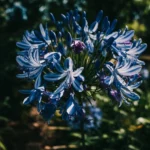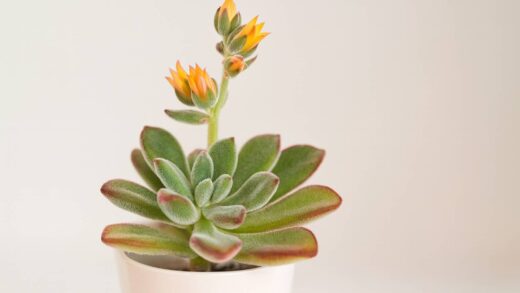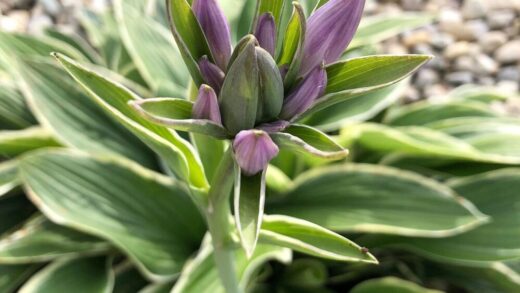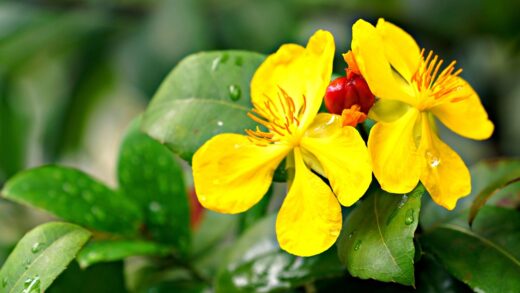Understanding the precise water requirements of globe amaranth is fundamental to cultivating healthy, vibrant plants that produce a profusion of long-lasting blooms. This plant has earned a well-deserved reputation for being drought-tolerant, but this resilience is most apparent once the plant is fully established. The irrigation needs of globe amaranth change significantly throughout its life cycle, from germination and early growth to full maturity. Providing the right amount of water at the right time is a balancing act; too little can stress a young plant, while too much is a far more common and serious threat, often leading to fatal root diseases. A thoughtful approach to watering will ensure these cheerful flowers thrive in your garden.
During the initial stages of growth, from seed germination through the first few weeks after transplanting, globe amaranth requires a consistent supply of moisture. The soil should be kept evenly moist to encourage the development of a deep and extensive root system. This early period is when the plant is most vulnerable to drying out. Deep, infrequent waterings are generally more effective than frequent, shallow sprinklings. This method encourages the roots to grow downward in search of water, which anchors the plant more securely and builds its resilience for the hotter, drier parts of the season.
As the plant matures and its root system becomes well-established, its water needs decrease dramatically. An established globe amaranth is remarkably efficient at conserving water and can withstand periods of little to no rainfall with grace. For plants situated in garden beds, natural rainfall is often sufficient to meet their needs throughout much of the summer. Supplemental irrigation should only be considered during prolonged droughts or extreme heat waves, when you might notice the lower leaves starting to yellow or the plant showing signs of wilting.
The key to successful irrigation for this species is to always allow the soil to dry out between waterings. Before you reach for the hose, it is crucial to check the soil’s moisture level. Simply insert your finger an inch or two into the soil near the base of the plant. If the soil feels damp, there is no need to water. This simple test is the most effective way to prevent overwatering, which can lead to root rot, a condition to which globe amaranth is particularly susceptible in poorly drained soils.
Watering during establishment
The establishment phase, which encompasses the time from sowing seeds until the plant has developed a robust root system in its final location, is the most water-critical period in the life of a globe amaranth. When starting from seed, either indoors or directly in the garden, the seedbed must be kept consistently moist to trigger and sustain the germination process. The soil should feel like a wrung-out sponge—damp but not saturated. Using a spray bottle or a watering can with a fine rose is ideal for this, as it provides gentle moisture without dislodging the small seeds.
More articles on this topic
Once the seedlings have emerged and been transplanted into the garden, regular watering remains a priority for the first two to three weeks. This consistent moisture helps the young plants overcome transplant shock and encourages their roots to expand into the surrounding soil. During this time, a deep watering once or twice a week is typically sufficient, though this may need to be adjusted based on your specific weather conditions, such as high heat or strong winds, which can dry the soil more quickly. The goal is to provide enough water to moisten the entire root zone, not just the surface.
A common mistake is to provide light, frequent sprinklings of water. This practice encourages the development of a shallow root system, as the roots have no incentive to grow deeper in search of moisture. A shallow root system makes the plant much more susceptible to heat and drought stress later in the season. Instead, applying water slowly and deeply allows it to penetrate further into the soil profile, promoting the growth of strong, deep roots that will serve as the plant’s foundation for the rest of the summer.
Monitoring the plants and the soil is key during this phase. Young plants will often give you visual cues if they are thirsty; their leaves may appear slightly limp or droopy. However, it is always best to confirm by checking the soil moisture before watering. As the plants begin to show new growth and appear more vigorous, it is a sign that they are becoming established. At this point, you can gradually begin to reduce the frequency of your supplemental watering and start transitioning to a more drought-tolerant maintenance schedule.
Irrigation for mature plants
Once a globe amaranth plant is considered fully established, typically after the first month of active growth in the garden, its irrigation needs change significantly. The deep root system developed during the establishment phase now enables the plant to access moisture from a larger volume of soil. This makes it exceptionally resilient and able to thrive with minimal supplemental watering. For mature plants growing in the ground, the natural rainfall in many regions is often all that is required to keep them healthy and blooming.
More articles on this topic
The strategy for watering mature plants should shift from a fixed schedule to an as-needed basis, guided by observation of both the plant and the weather. During typical summer conditions, you may not need to water your globe amaranth at all. Intervention is generally only required during periods of extended drought, characterized by several weeks without significant rainfall, coupled with high temperatures. In these situations, a single, deep soaking every couple of weeks is far more beneficial than more frequent, shallow watering.
When you do need to water, it is best to do so early in the morning. This timing allows the water to soak into the soil and be absorbed by the roots before the heat of the day increases evaporation. Watering in the morning also ensures that any moisture that gets on the foliage has ample time to dry, which helps to reduce the risk of fungal diseases. Applying water directly to the soil at the base of the plant using a soaker hose or drip irrigation is the most efficient method, as it delivers water directly to the root zone and keeps the leaves and flowers dry.
The signs of a thirsty mature plant can be subtle at first. You might notice a slight drooping of the leaves during the hottest part of the day, but they often recover as temperatures cool in the evening. If the wilting persists into the morning or the lower leaves begin to turn yellow and drop, it is a clear indication that the plant is experiencing drought stress and would benefit from a deep watering. However, it is important to remember that this is a tough plant, and it is always better to err on the side of underwatering rather than overwatering.
Container-grown globe amaranth
Cultivating globe amaranth in containers and pots requires a different approach to watering compared to garden-grown plants. The limited volume of soil in a container dries out much more quickly than garden soil, especially on hot, sunny, or windy days. This means that potted globe amaranth will need to be watered far more frequently. During the height of summer, it may be necessary to water your containers every day, or even twice a day during a heatwave, to prevent the soil from drying out completely.
The type of container you use can also affect watering frequency. Porous containers, such as those made from terracotta or unglazed ceramic, allow moisture to evaporate through their walls, causing the soil to dry out faster. Plastic or glazed ceramic pots are non-porous and will retain moisture for longer. Regardless of the material, it is absolutely essential that any container used for globe amaranth has adequate drainage holes at the bottom. Without proper drainage, water will accumulate, leading to saturated soil and the inevitable onset of root rot.
The best way to determine if a container plant needs water is to check the soil daily. Insert your finger into the potting mix up to the first knuckle; if the soil feels dry at that depth, it is time to water. When you do water, do so thoroughly until you see excess water running out of the drainage holes at the bottom of the pot. This ensures that the entire root ball has been moistened, not just the top layer of soil. Allow the pot to drain completely, and do not let it sit in a saucer full of water for an extended period.
Even though container-grown plants need more frequent watering, they are still susceptible to the dangers of overwatering. The principle of allowing the soil to dry out slightly between waterings still applies. It is a delicate balance, but one that is easily mastered with regular observation. A healthy, well-watered globe amaranth in a container will be lush and full of blooms, while an overwatered one will appear wilted and may have yellowing leaves, much like its garden-grown counterparts.
Water-wise gardening practices
Incorporating globe amaranth into a water-wise or xeriscape garden design is a natural fit due to its inherent drought tolerance. To maximize its water-saving potential, several gardening practices can be employed. The first is proper soil preparation. Amending the soil with organic compost before planting does more than just provide nutrients; it also significantly improves the soil’s structure and its ability to retain moisture. Healthier soil means that any water from rainfall or irrigation is held in the root zone for longer, reducing the need for frequent watering.
Applying a layer of organic mulch around the base of the globe amaranth plants is another highly effective water-conservation technique. A two- to three-inch layer of mulch, such as wood chips, straw, or shredded leaves, serves multiple purposes. It helps to suppress weed growth, which would otherwise compete with the plants for water and nutrients. More importantly, mulch acts as a protective barrier, insulating the soil from the sun’s heat, reducing surface evaporation, and keeping the soil cooler and moister for a longer period.
Strategic plant grouping, also known as creating hydrozones, is a cornerstone of water-wise landscaping. This involves grouping plants with similar water needs together in the same area of the garden. By planting globe amaranth alongside other drought-tolerant perennials and annuals, such as lavender, sedum, or verbena, you can create a planting zone that requires minimal supplemental irrigation. This is far more efficient than interspersing thirsty plants with drought-tolerant ones, which often leads to either overwatering the latter or underwatering the former.
Finally, adopting efficient irrigation methods can drastically reduce water consumption. As mentioned, using soaker hoses or a drip irrigation system delivers water slowly and directly to the plant’s root zone, minimizing losses to evaporation and runoff. These systems are far more efficient than overhead sprinklers, which can lose a significant amount of water to the air and also wet the foliage unnecessarily. By combining the right plant choice, like globe amaranth, with smart gardening practices, you can create a beautiful, blooming garden that is also environmentally responsible.




















